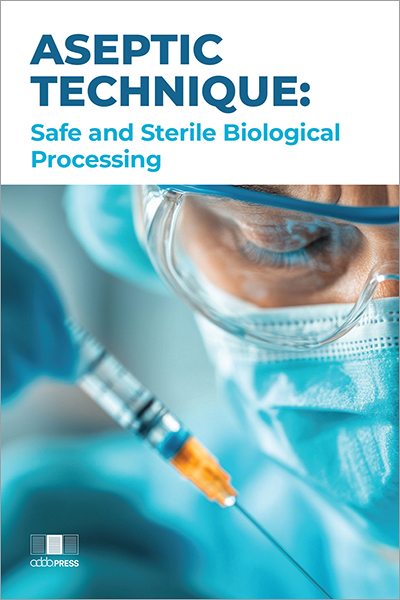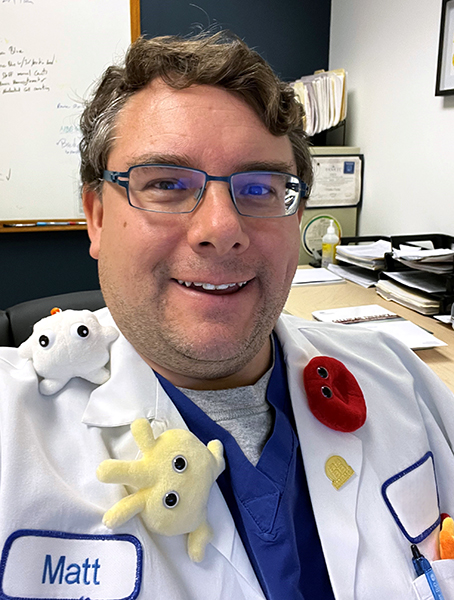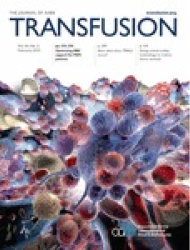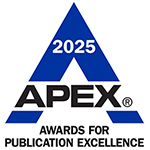No matter how carefully one works, a perfectly sterile laboratory environment is impossible, but there are degrees of good and bad aseptic technique. When aseptic technique is poor, the consequences are obvious: The facility will be at a higher risk for contamination events.
 At one lab I took over, nearly every culture showed massive fungal contamination within days. The previous manager had no hands-on aseptic or cell culture experience and trained staff without understanding the fundamentals. A review of their notes revealed confusion and guesswork, but the root causes were clear: a lack of real aseptic training and, more alarmingly, a contaminated water bath that was never changed. Worse, the prior lab manager had dropped in some pennies based on the mistaken belief that copper would disinfect the water. In reality, coins harbor biofilms and are a potent source of contamination.
At one lab I took over, nearly every culture showed massive fungal contamination within days. The previous manager had no hands-on aseptic or cell culture experience and trained staff without understanding the fundamentals. A review of their notes revealed confusion and guesswork, but the root causes were clear: a lack of real aseptic training and, more alarmingly, a contaminated water bath that was never changed. Worse, the prior lab manager had dropped in some pennies based on the mistaken belief that copper would disinfect the water. In reality, coins harbor biofilms and are a potent source of contamination.
While most lapses won’t be that extreme, even minor breakdowns in technique can quietly drive up contamination rates. These mistakes waste time and money and, in clinical settings, may even put lives at risk.
Many of these issues stem from common misconceptions that persist across laboratories. Let’s take a closer look at some of the most widespread myths about aseptic technique — and the facts behind them.
Most academic training emphasizes minimal protection — typically a basic lab coat and gloves. This often leaves the wrists and arms exposed when working in biosafety cabinets (BSCs), creating contamination risk. Although this level of protection might suffice in the classroom, it rarely holds up in regulated environments. Staff trained in such settings may unknowingly carry risky habits into production labs, where sterility is critical.
Reaching over open containers of media, reagents or cellular products introduces unnecessary risk. Airborne contaminants and particles from gloves, sleeves or tools can enter containers during passover events. If materials are reused or shared, contamination can spread quickly between batches or users.
The front air intake of a BSC is essential to maintaining airflow and protecting the workspace. Blocking it — even partially — with arms, clipboards or lab notes disrupts the cabinet’s protective barrier and lowers its efficiency. This common oversight can compromise the sterile field, especially during sensitive cell processing procedures.
Glove quality and bioburden vary widely across brands, even between product lines from the same manufacturer! Some non-sterile gloves carry high microbial loads, while others have bioburden levels similar to sterile gloves. But even sterile gloves are only as safe as the method used to open and don them. Poor technique during donning can negate sterility and increase contamination risk. Like any tool, how you use it and operate with it matters.
Cleaning and disinfecting are related — but distinct — steps. And “clean” does not mean disinfected. Cleaning is removing things you can see, like spills, drips or soil, while disinfection is a process that kills a large number of microorganisms. Disinfection should occur after cleaning, as large amounts of contaminants can lower the effectiveness of many disinfectants.
Alcohol-based solutions, like 70% ethanol or isopropyl, have some microbiocidal properties and are good general disinfectants, but they are often insufficient as the sole disinfectant. A quick wipe is rarely enough to meet manufacturers' recommendations for disinfection, and it can be challenging to keep the surface wet long enough in some scenarios. Alcohols should be part of a broader protocol, not a standalone solution.
Want to avoid costly mistakes and strengthen your team’s aseptic practices? AABB’s new publication, Aseptic Technique: Safe and Sterile Biological Processing, offers concise, practical guidance for laboratory professionals at all levels.
The book covers essential topics such as proper use of personal protective equipment, best practices for working in biosafety cabinets, cleanroom protocols, environmental monitoring, personal and laboratory hygiene and strategies to prevent laboratory-acquired infections. It also includes self-assessments, an environmental monitoring schedule and suggested readings to support continuous quality improvement.

Matthew Wilgo, CABP(H), is a consultant in biological processing and the laboratory supervisor for the Connell and O'Reilly Families Cell Manipulation Core Facility (CMCF) at Dana-Farber Cancer Institute. He has extensive experience in regulatory compliance, process validation and biotherapy product development. An active AABB member for 14 years, he serves as an AABB assessor and helped develop the certification exam for AABB’s Certified Advanced Biotherapies Professional (CABP) Credentialing Program.
BACK TO ISSUE
August 2025NEXT STORY
Meet an AABB Assessor: Josie Pippert
Transfusion is AABB’s scholarly, peer-reviewed monthly journal, publishing the latest on technological advances, clinical research and controversial issues related to transfusion medicine, blood banking, biotherapies and tissue transplantation. Access of Transfusion is free to all AABB members.
Learn More About Transfusion Journal
Keep abreast of what's happening in the field of biotherapies with CellSource - AABB's monthly update on the latest biotherapies news.
To submit news about the blood and biotherapies field to AABB, please email news@aabb.org.
President
Meghan Delaney, DO, MPH
Chief Executive Officer
Debra Ben Avram, FASAE, CAE
Chief Communications and Engagement Officer
Julia Zimmerman
Director of Marketing and Communications
Jay Lewis, MPH
Managing Editor
Kendra Y. Mims, MFA
Senior Communications Manager
Drew Case
AABB News
(ISSN 1523939X) is published monthly, except for the combined November/December issue for the members of AABB; 4550 Montgomery Avenue; Suite 700 North Tower; Bethesda, MD 20814.
AABB is an international, not-for-profit association representing individuals and institutions involved in transfusion medicine, cellular therapies and patient blood management. The association is committed to improving health by developing and delivering standards, accreditation and educational programs that focus on optimizing patient and donor care and safety.
+1.301.907.6977
Email: news@aabb.org
Website: www.aabb.org
Copyright 2025 by AABB.
Views and opinions expressed in AABB News are not necessarily endorsed by AABB unless expressly stated.
Notice to Copiers: Reproduction in whole or part is strictly prohibited unless written permission has been granted by the publisher. AABB members need not obtain prior permission if proper credit is given.
